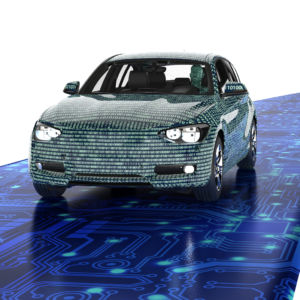They used to say the walls have ears. Soon, the road will have brains. Well, they’ll be connected to one brain — not yours.
They call it “smart pavement.” Everything is smart these days. Meaning, won’t leave you alone, is peremptory, controlling and most of all, nudging.
Doing what you want to do in a car especially is so 1990s.
So instead of just asphalt, it’ll be asphalt-plus. Sensors and receiver/transmitters embedded in the pavement — like chocolate chips in cookie dough — spaced at regular intervals. These will communicate with your also-“smart” car (you can’t buy a new car that isn’t “smart”) and your “smart” car will communicate with them.
You can imagine what they will talk about.
But you won’t be included in the conversation.
The Denver Post reported the other day that Colorado will be the first state to embed these little brains (and eyes and ears) in the pavement, ostensibly to “identify and warn drivers of hazardous conditions and sharp curves,” probably via the car’s LCD touchscreen — which in many new cars already helpfully lets you know when you’re speeding via an angry red icon, as well as other such things.
New cars — the “smart” ones, which is all of them — also keep track of your buckling-up habits and the smartest ones also know who you’re talking to on your phone, what you’re talking about and what you’re listening to on the radio, too.
You may see where this is going …
The “smart pavement” will in the first place let THEM know you’re speeding. Maybe even that you’re accelerating “too fast” for saaaaaaaaafety. Slow down — it’s no longer a suggestion.
That you just changed lanes; took Exit 35A.
Where you are headed.
All duly noted, recorded and collated.
Are you driving the King’s highway on out-of-date tags? A “check engine” light on? Naughty naughty! The “smart” road could — and likely, will — instruct your “smart” car to pull over, turn itself off and await the impound truck.
And — in the probably not-far future — they will know you’re driving on the days — or at times of the day — you’re not allowed to. Many areas already have restricted HOV — High Occupancy Vehicle — lanes upon which only cars with a certain number of people on board may tread; the same could just as easily be applied to favor electric cars or cars that are sufficiently “efficient” or don’t emit “too much” C02 and so pass muster with the government bureaucrats who run the roads we paid for.
But it goes deeper than just the usual petty harassment over traffic ukase. They want — cue Iron Maiden’s song, “The Prisoner” (also a classic ’60s TV series) — information. About everything.
In order not just to control but to catalog and sell.
Soon — already — targeted ads will be piped into your car, via the LCD touchscreen and the 4G in-car WiFi they’ve been including, so generously, as standard equipment in the latest cars. GM is the leader here, but the rest will follow.
How could they resist? A captive audience of millions, ready to “learn more” about whatever their “partners” are piping into the car via the in-car TV.
Low on gas? The “smart” car knows and so does the “smart” road. Faster than you can say ExxonMobil, a helpful message appears, nudging you toward the nearest “partner” station.
Like country music? Your “smart” car knows that, too — and, what do you know? There’s a country store just up ahead!
Just to give you some idea. The possibilities are almost limitless. And of course, we won’t have any choice.
The system — the grid being erected — is the technocratic wet dream for the future. Total real-time management. It will be a future in which privacy — and control — over not merely our cars but our lives will be rendered as functionally obsolete as the necessity of armed government workers being obliged to articulate probable cause prior to a search, obtain a warrant before a wiretap or endure the bother of needing to convict you of a crime before relieving you of your property.
“Data is the new asphalt of transportation,” croaks Peter Kozinski, who is the head technocrat of the Colorado Department of Transportation’s RoadX division, which is implementing the system.
It’s a big-bucks thing, too — the bucks coming out of our pockets, as usual. The “industry” — as it’s styled — already generates $17 billion in wealth-transferred revenue; funds extracted by unwilling victims and used to fund something the victims never asked for and probably don’t want.
Remember: Nobody — not a single person — voted for this. Unelected, unaccountable bureaucrats simply decided — and their decision will be paid for with the money (and privacy and liberty) of those who never had a chance to offer an opinion on the subject.
Probably because the vote — had it been put to one — would not have gone the way the technocrats desired.
Ergo the “nudge.”

